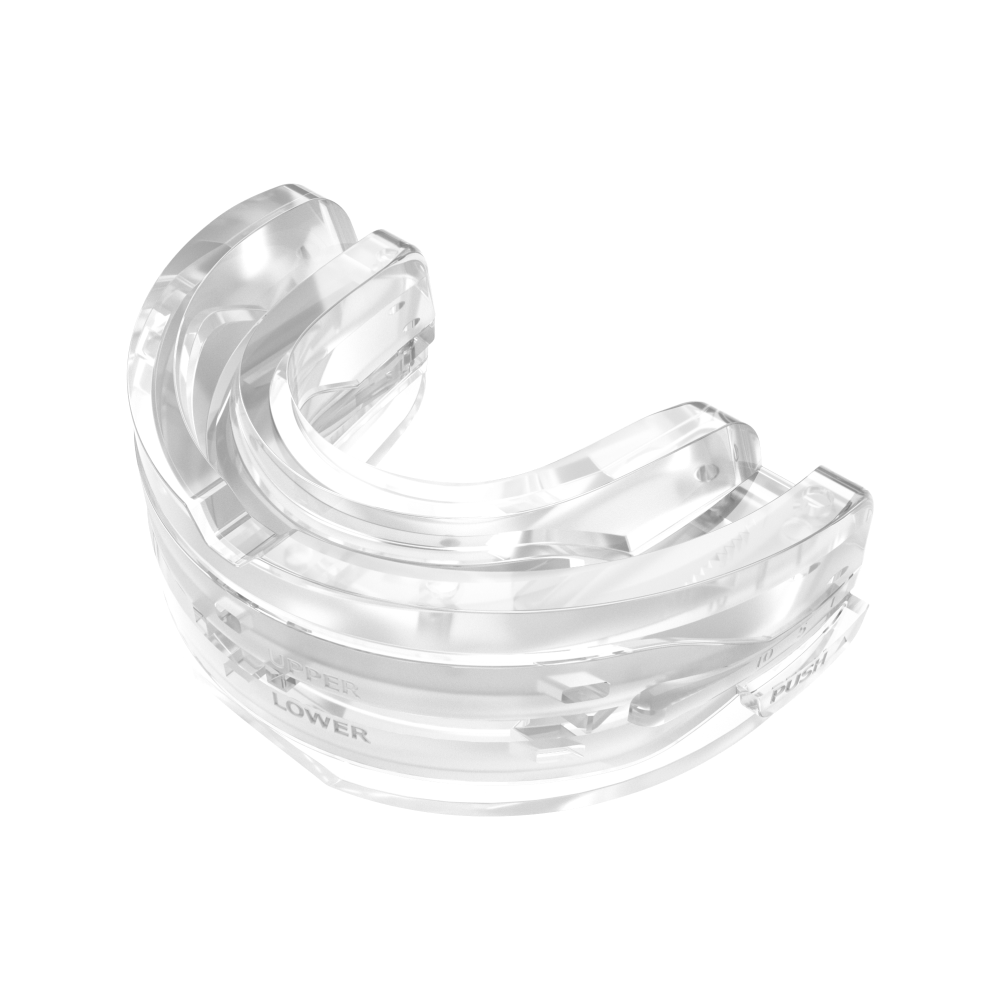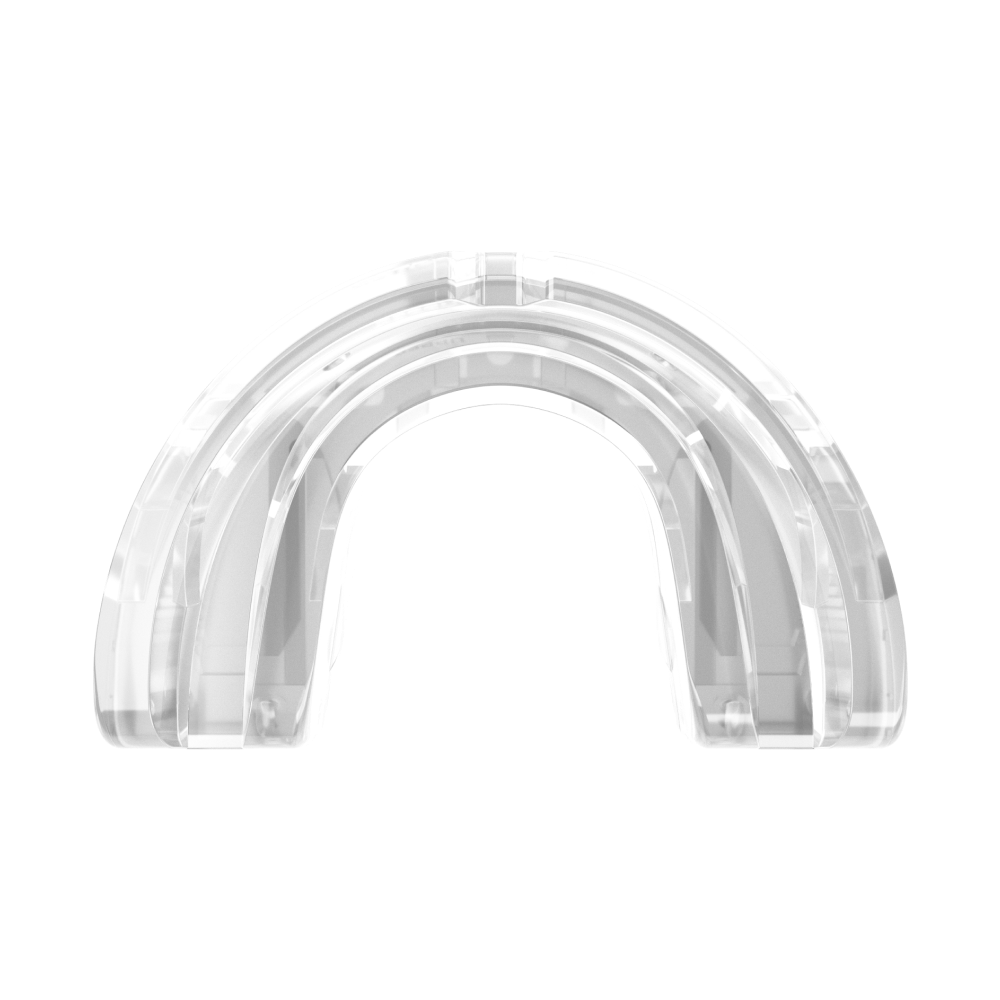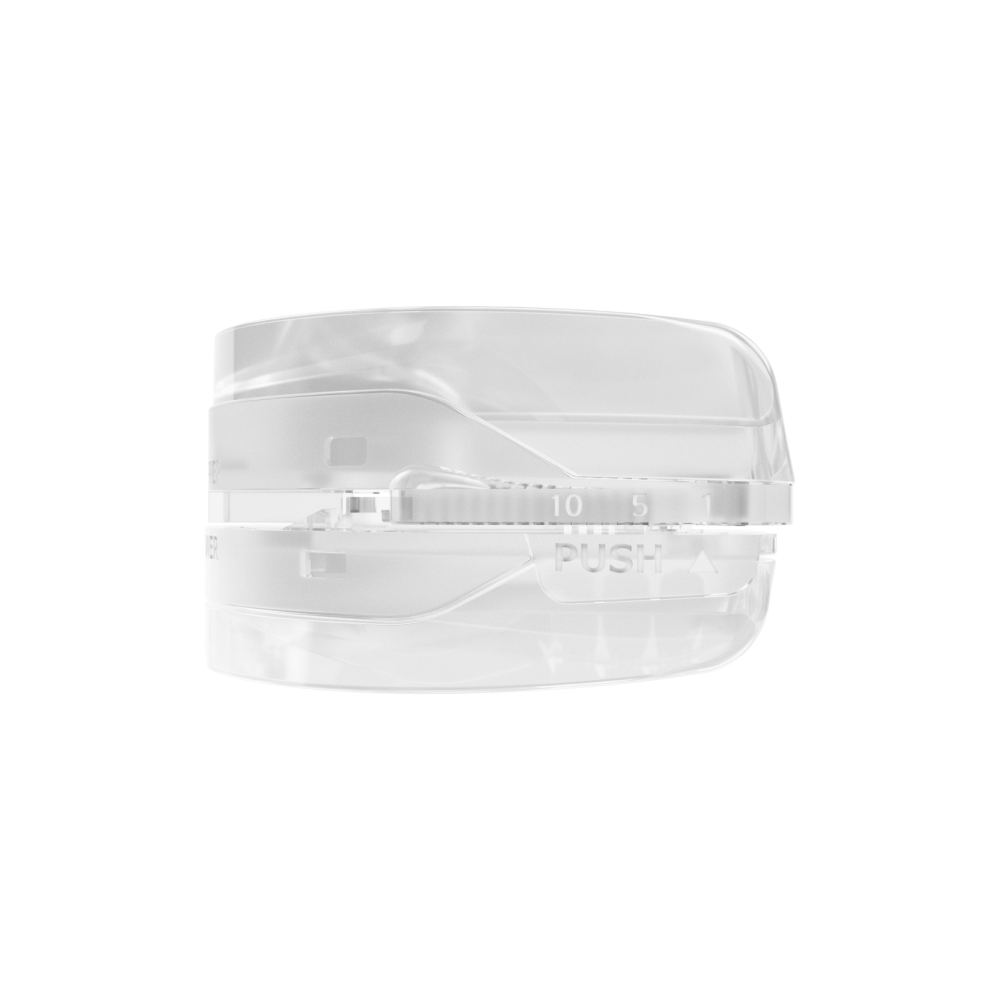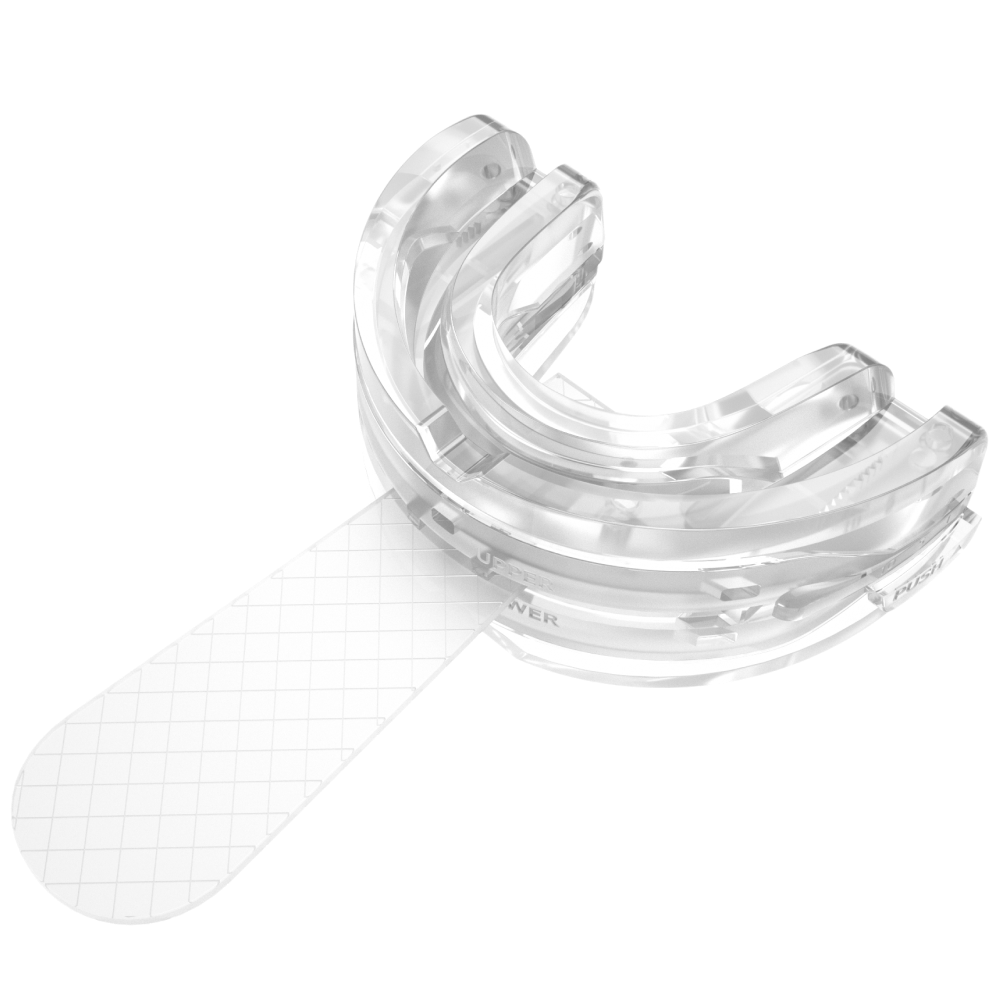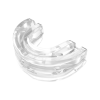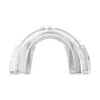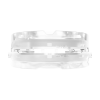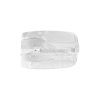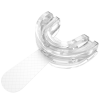M2 MRD
M2 is a quickly tailored oral appliance solution for those who are seeking to address snoring or mild OSA without medical assistance.
30-Night Money-back Guarantee (excluding shipping fee)
Lab-Lever Product

Price rise soon!
Silent nights from Day One, adaptation in a Week, renew your life in a Month!
or your money back!
The anti-snoring solution trusted by thousands
Clinical evidence shows that MRD get superior results on AHI compared to upper airway surgery.
“When I first heard of the MRD mouthpiece, I was skeptical. my major concern was that it would be very uncomfortable to use. I am happy to report that there is minimal discomfort in using it.I am amazed that my snoring has stopped. It’s worth it.”
Expected Benefits
Snoring
For some people, snoring may diminish substantially on the first night of using M2. For most people, snoring will be present until the M2 is gradually adjusted as the jaw is brought forward to the correct position.
Daytime Sleepiness
Breathing
Protection of Teeth
4-Week Procedure and Guarantee
Week 1: Adaptation
Week 2: Titration
Gradually move the jaw forward by millimeters.
Week 3: Find the Optimal Position
Discover a comfortable and effective forward position.
Week 4: Enjoy or Refund
Experience the life improvements M2 brings, with increased energy during the day and enhanced relationships
If, after following these steps, you feel no improvement, a full refund (excluding shipping fees) is available.
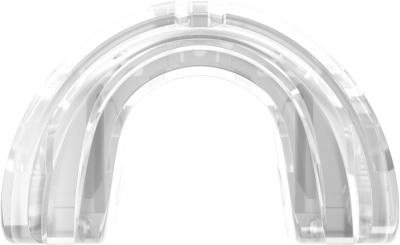
Perfect Fit, Maximum Comfort
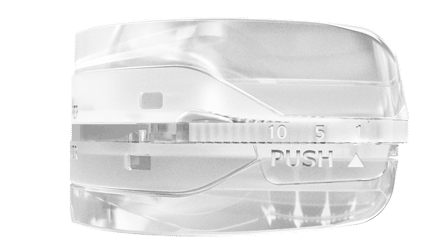
Precision-Titration
M2 is a precision-titration anti-snoring device that allows you to titrate in millimeter increments.
We recommend starting your use of the M2 with an initial 1-millimeter setting and adjusting by 1 millimeter per week until snoring or OSA disappears and reaches a level of comfort you find acceptable
Maximum space for
tongue and breathing
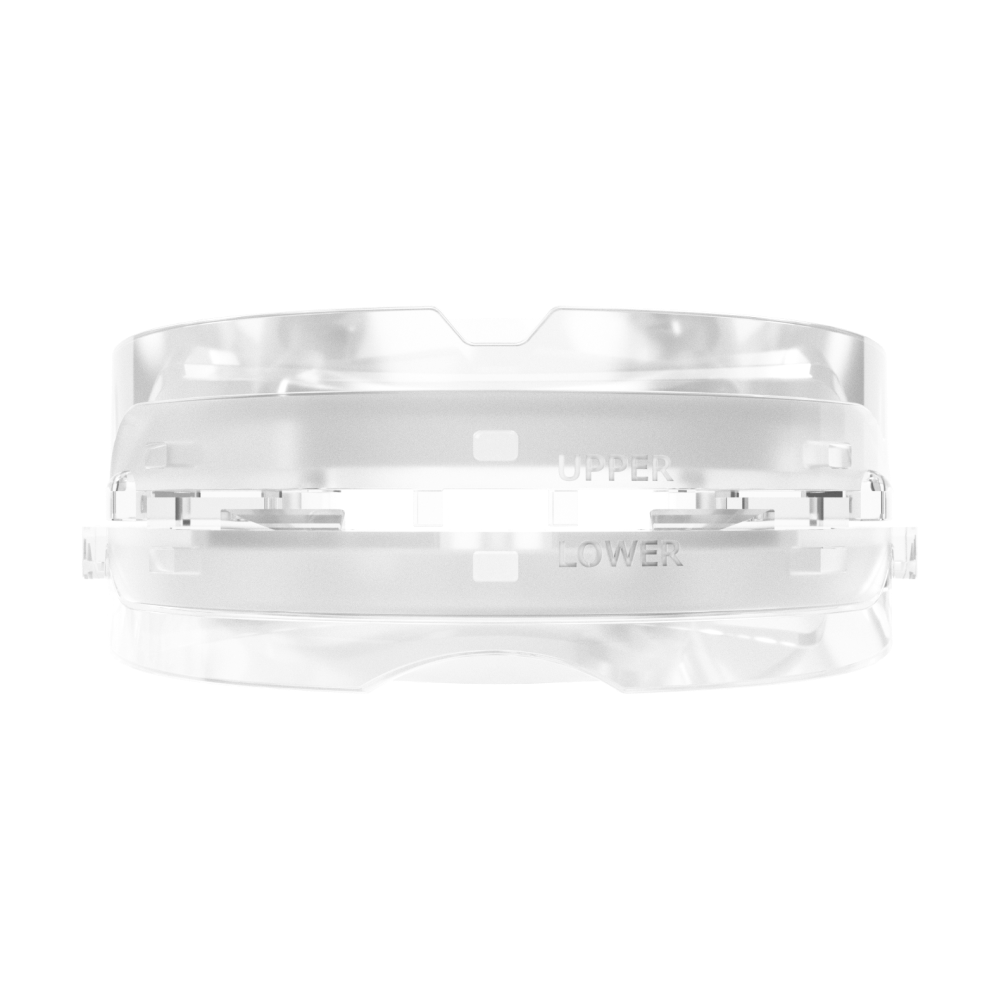
Stop Snoring or Get Your Money Back!
We offer a 30-night 100% money-back guarantee (excluding shipping fee). Try M2 for free for 30 nights to see if it’s the right fit for you
Reviews
-
Emily Johnson
⭐️⭐️⭐️⭐️⭐️It has been little more than a week and I am sleeping without the gasping for air at night! And my partner is grateful for the quiet also. I didn’t have much trouble adjusting to it and I am pretty sensitive. Still working on getting more comfortable but a good nights’ sleep is worth it!! -
Michael Davis
⭐️⭐️⭐️⭐️⭐️I tried several other anti-snore guards, but my lower jaw would pull away from the mouthpiece rendering it useless. This one moves with my mouth allowing me to breathe better and still helps my snoring. -
Olivia Smith
⭐️⭐️⭐️⭐️⭐️Previously we have tried a different brand of mouthguard, but this one has a great price and lots of good reviews. I took a chance and purchased it, and it’s a good quality, easy to mold, comfortable mouthguard. This company has earned my business and I will buy the mouth guards from them again -
James Anderson
⭐️⭐️⭐️⭐️⭐️The boil and bite technology has come a long way in a few short years and this device molds very well to my teeth and gums for the correct fit. At the current price, I can go through TEN of these for what ONE of the custom molded units I formerly used costs so it’s a far more cost effective solution. Will definitely be buying more soon. -
Sophia Brown
⭐️⭐️⭐️⭐️⭐️Took a couple of nights to get used to putting it on. Has been a great product to minimise teeth grinding! -
Ethan Wilson
⭐️⭐️⭐️⭐️⭐️I tried this after my second sleep study to see if there were any alternatives I could use for sleep apnea. My insurance only wanted to cover 80% of the cost of a CPAP machine if I wore it 100% of the time. In the past the CPAP made sleep a full night impossible.The very first night I slept almost through the night and showed an increase time of deep sleep. The second night I slept entirely through the night with a major increase in deep sleep time. The most amazing thing is that I have a head cold and still managed to get uninterrupted sleep. I’m sold.
How does M2 work?
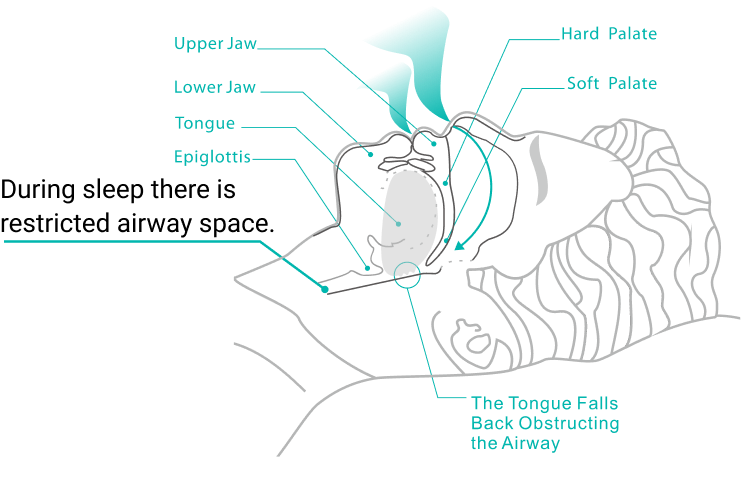
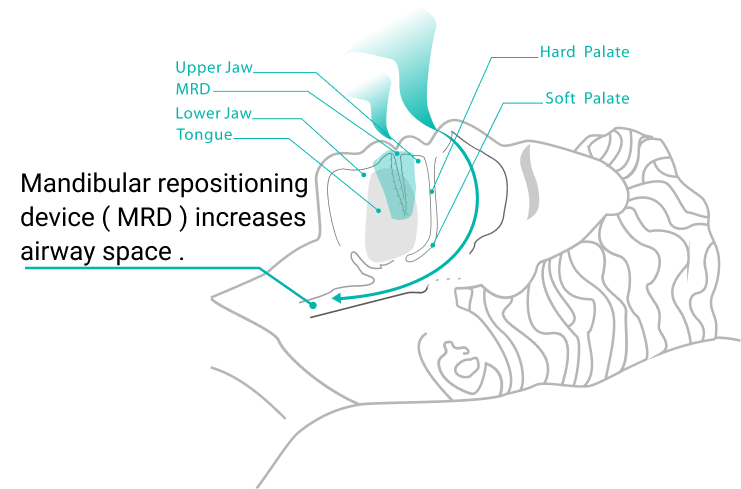
Steps to know if M2 works for you
- Hold M2 in your right hand in a ‘C’ position and place your thumb and index finger on the upper tray over the word “PUSH” Do not rest your fingers on the bottom tray.
- While pushing on both sides of the device, use your other hand to push or pull the bottom tray to the desired setting. The adjustment will lock into place when you release your fingers from the word “PUSH”.
- Ensure both sides of the device indicate the same adjustment setting.
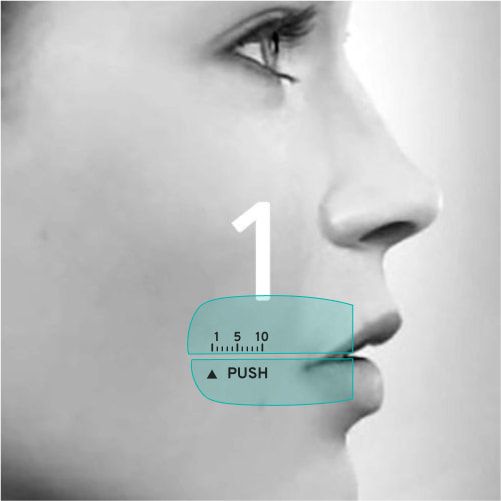
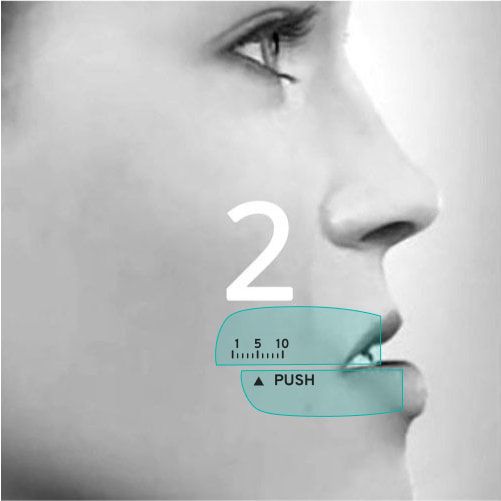
You should find it much more difficult to make a snoring noise in step 2, if any at all, this is an indication that M2 will work for you.
What you should know
Who can’t use
- Have central sleep apnea
- Are under the age of 18
- Have a history of TMD, temporomandibular disorder
- Have a respiratory disorder
- Have loose teeth, abscesses, severe gum disease or advanced periodontal disease
- Wear dentures, braces or other dental appliances
- Have implants, crowns, or caps unless approved by their dentist
Use of M2 may cause
- Gingival or dental soreness
- Pain or soreness to the temporomandibular joint
- Obstruction of oral breathing
- Excessive salivation
- Tooth movement or changes in dental occlusion
What’s in the box?
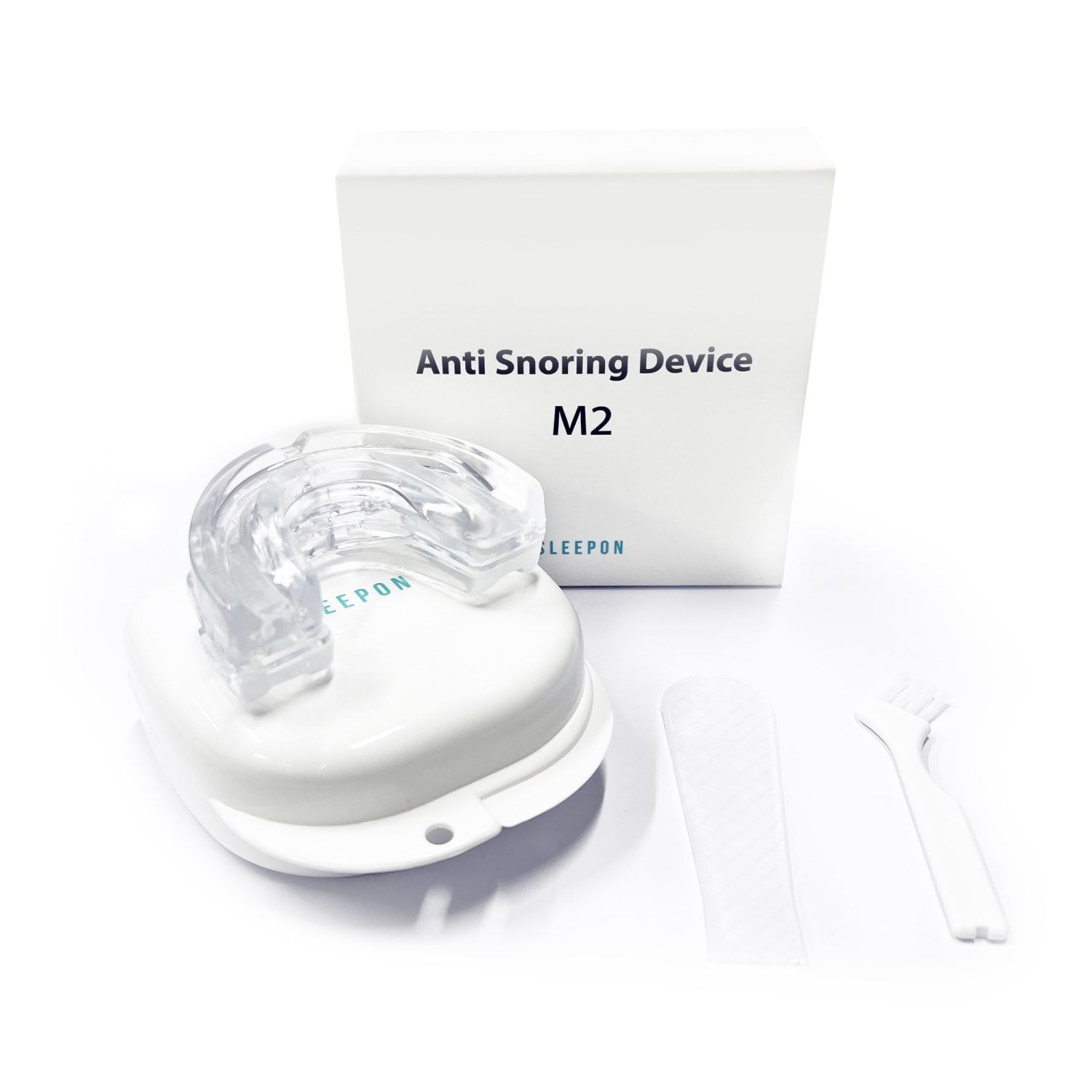
MRD M2 × 1
Handle × 1
Brushes × 1
Instruction Booklet × 1
Storage Container × 1
FAQs
M2 work by pushing or pulling your lower jaw forward. By doing this, your tongue is kept in a position that does not block your airway. This reduces the risk of snoring or that your tongue may obstruct your airway during sleep. If this device is helping you, the sound of snoring should be gone entirely or lessened.
As with all treatments, not everyone gets the same benefit from oral appliances. For some, the OSA and snoring go away completely, while for other people, other forms of treatment are needed. Oral appliances are more likely to work if you have mild or moderate sleep apnea; more recent evidence supports use for some people with severe sleep apnea as well. If your sleep apnea gets better when you lie on your side (compared to sleeping on your back) and if you are not overweight, you are also more likely to benefit from this appliance. If you have central sleep apnea (a less common condition than OSA), then oral appliances are unlikely to be helpful. Until you have been properly fitted for an oral appliance and tried it, no one can know how well it will work for you.
CPAP (Continuous Positive Airway Pressure) is a reliable treatment for sleep apnea. Immediate results are typically seen with CPAP regardless of how bad the sleep apnea is. An oral appliance will usually improve your sleep apnea, but may not completely control it. If you have moderate or severe OSA, CPAP is more likely to work to correct your sleep apnea than an oral appliance.
However, an oral appliance may be a better option than no treatment at all if you cannot tolerate CPAP. M2 are also not the main therapy if you have significant heart disease or are very sleepy during the day. In these cases, CPAP is the best treatment. A sleep specialist can provide guidance regarding the most appropriate therapy for you. For more information see the ATS Patient information series piece on “Continuous Positive Airway Pressure for Adults with Obstructive Sleep Apnea” at www.thoracic.org/patients.
If fitted well, the oral appliance should be comfortable during the night. However, because it acts to push your jaw forward, some people feel discomfort when first using the appliance. This discomfort tends to improve as you use it more. If discomfort happens, it is usually in the joint at the back of your jaw, just in front of the ear (the temporomandibular joint). This discomfort should go away when you take the appliance out in the morning.
Also, oral appliances may cause increased saliva in your mouth, or make your teeth feel tender. These symptoms usually settle down quickly the more you use the device. Over time, there may be tooth movement, changes in your bite, or problems with the joint and muscles of your jaw. It is important to have regular follow-up visits with the dentist who supplied you with the appliance to detect and manage problems early.
- Gently brush your M2 with a toothbrush and toothpaste after each use.To best clean, disinfect, and freshen your M2.
- Allow M2 to dry after cleaning. Keep M2 in its storage case when not in use.
- Do not use harsh chemicals or abrasive cleaners such as ammonia, bleach, or mouthwash that contains alcohol.
When an oral appliance is working well, there should be no snoring. If you are wearing the appliance because of sleep apnea, you may see improved sleepiness, fatigue and other symptoms of sleep apnea. A good way to find out if you are getting the help you need from your oral appliance is to have a repeat overnight sleep study with the oral appliance in place. If the study shows that wearing the oral appliance has helped your OSA, you should continue to use if every night. If it is not helping your sleep apnea, other treatments (such as CPAP) will be recommended.
If symptoms of snoring or sleep apnea return (for example, feeling tired during the day), it is important to have a follow up appointment with your dentist or your sleep specialist. Your dentist might need to adjust the appliance. After a number of years, some people using an oral appliance find they need to consider other treatments for their OSA, especially if they have had weight gain.
Fast shipping
30-day returns
1-year warranty
Secure payment
Products
Company
Copyright © SLEEPON. All rights reserved.
SLEEPON keeps both Sleeponhealth and Sleepon.us due to the brand upgrading. We promise to provide the same products and service in both sites.
